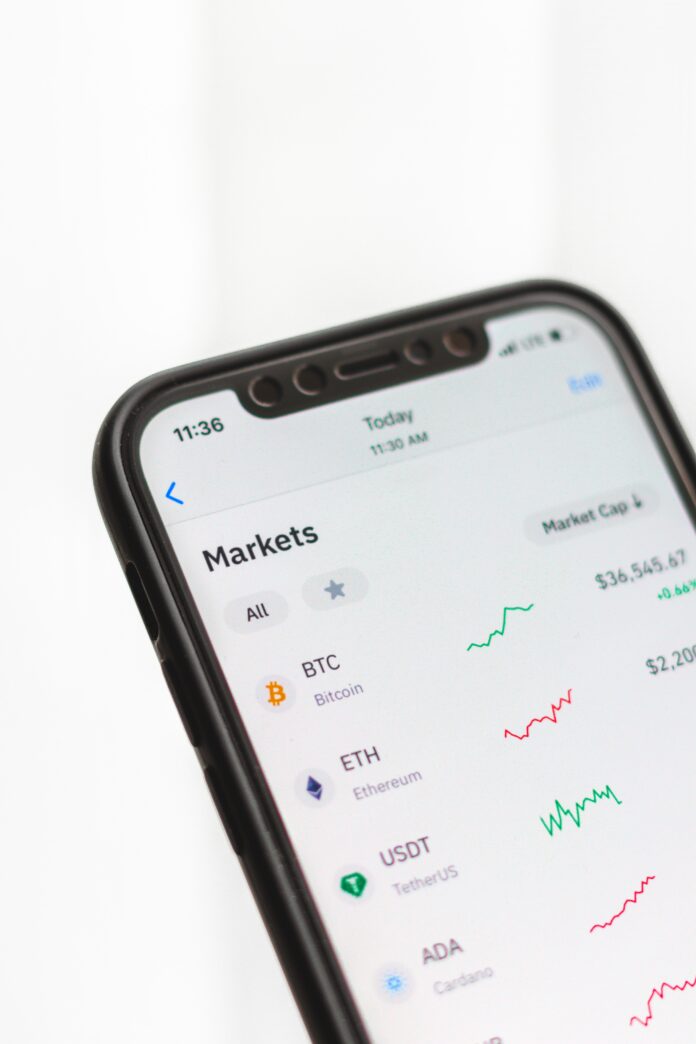Virtual currency, also known as digital currency or cryptocurrency, has emerged as a revolutionary concept in the field of finance and technology. It is a form of currency that exists solely in electronic or digital format, without any physical counterpart like coins or banknotes. Virtual currency operates on decentralized systems, typically based on blockchain technology, which ensures transparency, security, and immutability. Over the years, virtual currency has gained significant popularity and recognition, challenging traditional financial systems and paving the way for a new era of digital transactions and decentralized finance. In this comprehensive guide, we will explore the world of virtual currency, its underlying technologies, its uses, and its implications for individuals, businesses, and the global economy.
Virtual currency has transformed the financial landscape by introducing a decentralized and peer-to-peer mode of transacting value. Unlike traditional fiat currencies issued by governments, virtual currency is typically created, stored, and transferred electronically through cryptographic algorithms. The most well-known and widely adopted virtual currency is Bitcoin, which was introduced in 2009 by an anonymous individual or group of individuals known as Satoshi Nakamoto. Since then, numerous other virtual currencies, often referred to as altcoins, have emerged, each with its own unique features and functionalities.
One of the key aspects that differentiate virtual currency from traditional forms of money is its underlying technology, known as blockchain. Blockchain is a distributed ledger that records all transactions across a network of computers, known as nodes. These transactions are grouped into blocks and linked together in a chain-like structure, hence the name “blockchain.” This technology ensures transparency, as all participants in the network can view and verify the transactions, and security, as the data stored on the blockchain is resistant to tampering or alteration.
The first important aspect to consider about virtual currency is its decentralization. Unlike centralized financial systems where a central authority, such as a government or a bank, controls and regulates the currency, virtual currencies are decentralized and operate on a peer-to-peer network. This means that transactions can be conducted directly between users without the need for intermediaries, such as banks or payment processors. Decentralization empowers individuals and businesses by providing them with greater control over their financial transactions and reducing reliance on traditional financial institutions.
Secondly, virtual currency offers enhanced privacy and anonymity. While traditional financial systems often require users to disclose personal information for verification purposes, virtual currency transactions can be conducted pseudonymously. Users are identified by their unique cryptographic addresses rather than their real names, providing a certain level of privacy. However, it is important to note that virtual currencies are not entirely anonymous, as transactions can still be traced on the blockchain. Nevertheless, virtual currencies offer individuals an alternative to traditional financial systems, where privacy concerns may arise.
Another significant aspect of virtual currency is its potential for financial inclusion. In many parts of the world, access to traditional banking services is limited or nonexistent. Virtual currency provides an opportunity for individuals who are unbanked or underbanked to participate in the global economy. With just a smartphone and an internet connection, anyone can create a virtual currency wallet and start transacting. This inclusivity has the potential to empower individuals and communities by providing them with access to financial services and opportunities that were previously unavailable.
The fourth important aspect of virtual currency is its potential as a store of value and investment asset. Virtual currencies, particularly Bitcoin, have gained significant attention as an investment vehicle. The limited supply and increasing demand for virtual currencies have led to substantial price appreciation over time. However, it is important to note that virtual currencies are highly volatile, and their value can fluctuate dramatically. Investing in virtual currencies carries risks, and individuals should exercise caution and conduct thorough research before participating in the virtual currency market.
Finally, virtual currency has the potential to revolutionize cross-border transactions and remittances. Traditional cross-border transactions are often characterized by high fees, lengthy processing times, and the need for intermediaries. Virtual currency offers a more efficient and cost-effective alternative. By leveraging blockchain technology, virtual currencies enable near-instantaneous cross-border transactions with reduced fees. This has significant implications for remittance services, as virtual currency can provide a faster and cheaper way for individuals to send money to their families and friends in different countries.
In summary, virtual currency is a digital form of currency that operates on decentralized systems, primarily based on blockchain technology. It offers decentralization, enhanced privacy, financial inclusion, investment potential, and improved cross-border transactions. As virtual currency continues to evolve and gain wider acceptance, it is important for individuals and businesses to understand its intricacies, benefits, and risks.
To recap the five important aspects of virtual currency discussed in this guide:
1. Decentralization: Virtual currency operates on a decentralized peer-to-peer network, allowing for direct transactions without intermediaries, empowering individuals and reducing reliance on traditional financial systems.
2. Privacy and Anonymity: Virtual currency transactions can be conducted pseudonymously, providing enhanced privacy compared to traditional financial systems, although transactions can still be traced on the blockchain.
3. Financial Inclusion: Virtual currency enables individuals who are unbanked or underbanked to access financial services and participate in the global economy with just a smartphone and an internet connection.
4. Store of Value and Investment Asset: Virtual currencies, such as Bitcoin, have gained attention as an investment asset, offering the potential for substantial price appreciation, although they are highly volatile and carry investment risks.
5. Cross-border Transactions and Remittances: Virtual currency has the potential to revolutionize cross-border transactions by providing faster, more cost-effective alternatives to traditional remittance services.
It is important to note that virtual currency is a rapidly evolving field, and regulations, market dynamics, and technological advancements may impact its characteristics and implications. Therefore, staying informed and conducting thorough research is essential for individuals and businesses looking to engage with virtual currency.
Virtual currency has transformed the financial landscape by introducing a decentralized and peer-to-peer mode of transacting value. Unlike traditional fiat currencies issued by governments, virtual currency is typically created, stored, and transferred electronically through cryptographic algorithms. The most well-known and widely adopted virtual currency is Bitcoin, which was introduced in 2009 by an anonymous individual or group of individuals known as Satoshi Nakamoto. Since then, numerous other virtual currencies, often referred to as altcoins, have emerged, each with its own unique features and functionalities.
One of the key aspects that differentiate virtual currency from traditional forms of money is its underlying technology, known as blockchain. Blockchain is a distributed ledger that records all transactions across a network of computers, known as nodes. These transactions are grouped into blocks and linked together in a chain-like structure, hence the name “blockchain.” This technology ensures transparency, as all participants in the network can view and verify the transactions, and security, as the data stored on the blockchain is resistant to tampering or alteration.
The first important aspect to consider about virtual currency is its decentralization. Unlike centralized financial systems where a central authority, such as a government or a bank, controls and regulates the currency, virtual currencies are decentralized and operate on a peer-to-peer network. This means that transactions can be conducted directly between users without the need for intermediaries, such as banks or payment processors. Decentralization empowers individuals and businesses by providing them with greater control over their financial transactions and reducing reliance on traditional financial institutions.
Secondly, virtual currency offers enhanced privacy and anonymity. While traditional financial systems often require users to disclose personal information for verification purposes, virtual currency transactions can be conducted pseudonymously. Users are identified by their unique cryptographic addresses rather than their real names, providing a certain level of privacy. However, it is important to note that virtual currencies are not entirely anonymous, as transactions can still be traced on the blockchain. Nevertheless, virtual currencies offer individuals an alternative to traditional financial systems, where privacy concerns may arise.
Another significant aspect of virtual currency is its potential for financial inclusion. In many parts of the world, access to traditional banking services is limited or nonexistent. Virtual currency provides an opportunity for individuals who are unbanked or underbanked to participate in the global economy. With just a smartphone and an internet connection, anyone can create a virtual currency wallet and start transacting. This inclusivity has the potential to empower individuals and communities by providing them with access to financial services and opportunities that were previously unavailable.
The fourth important aspect of virtual currency is its potential as a store of value and investment asset. Virtual currencies, particularly Bitcoin, have gained significant attention as an investment vehicle. The limited supply and increasing demand for virtual currencies have led to substantial price appreciation over time. However, it is important to note that virtual currencies are highly volatile, and their value can fluctuate dramatically. Investing in virtual currencies carries risks, and individuals should exercise caution and conduct thorough research before participating in the virtual currency market.
Finally, virtual currency has the potential to revolutionize cross-border transactions and remittances. Traditional cross-border transactions are often characterized by high fees, lengthy processing times, and the need for intermediaries. Virtual currency offers a more efficient and cost-effective alternative. By leveraging blockchain technology, virtual currencies






















